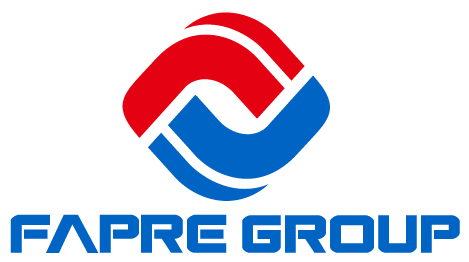NEWS CENTER
Rubber drive belts are crucial components in a wide array of machines and devices, providing reliable and efficient power transmission. These belts are found in everything from automotive engines to household appliances, playing a vital role in ensuring smooth and uninterrupted operation. In this guide, we will explore what rubber drive belts are, their types, applications, benefits, and maintenance tips, offering a comprehensive overview of these indispensable components.
What Are Rubber Drive Belts?
Rubber drive belts are flexible loops made from rubber and other materials, designed to transfer power between rotating shafts in various machines. They are essential for converting rotational motion from one component to another, ensuring that different parts of a machine work in harmony. The unique properties of rubber, such as elasticity and high friction, make these belts ideal for a wide range of applications where flexibility and grip are essential.
Types of Rubber Drive Belts
1. V-Belts
V-belts are the most common type of drive belt, characterized by their trapezoidal cross-section. This design allows them to fit securely into pulley grooves, providing excellent grip and minimizing slippage. V-belts are commonly used in automotive engines, industrial machinery, and household appliances due to their durability and efficiency.
2. Timing Belts
Timing belts, also known as synchronous belts, have teeth that fit into matching grooves on the pulleys. This design ensures that the belt and pulleys rotate in unison, maintaining precise timing between the driving and driven components. Timing belts are critical in applications where accurate synchronization is necessary, such as in camshaft drives of internal combustion engines.
3. Flat Belts
Flat belts have a simple, flat cross-section and are used in applications requiring high-speed and low-torque transmission. They are commonly found in conveyor systems, treadmills, and older machinery, offering a cost-effective solution for power transmission.
4. Multi-Ribbed Belts
Multi-ribbed belts, also known as serpentine belts, have multiple ribs running along the belt’s surface. These ribs fit into corresponding grooves on the pulleys, providing a larger surface area for power transmission. Multi-ribbed belts are used in automotive engines to drive multiple accessories, such as the alternator, power steering pump, and air conditioning compressor.
Applications of Rubber Drive Belts
Automotive Industry
In the automotive industry, rubber drive belts are used to power various engine components, including the alternator, water pump, and air conditioning compressor. Timing belts ensure precise synchronization between the crankshaft and camshaft, which is crucial for the engine's operation.
Industrial Machinery
Rubber drive belts are used in industrial machinery, such as conveyor systems, pumps, and compressors. They provide reliable and efficient power transmission, reducing the need for frequent maintenance and ensuring smooth operation.
Household Appliances
Many household appliances, such as washing machines, dryers, and vacuum cleaners, use rubber drive belts to transfer power from the motor to other parts of the appliance. These belts help ensure that the appliances function efficiently and effectively.
Agricultural Equipment
In agricultural machinery, such as tractors and harvesters, rubber drive belts are used to operate various components, including the engine, transmission, and hydraulic systems. These belts play a crucial role in ensuring the reliability and efficiency of agricultural equipment.
Benefits of Rubber Drive Belts
Flexibility
Rubber drive belts are highly flexible and can bend around pulleys of various sizes and shapes. This flexibility allows them to be used in complex configurations, making them suitable for a wide range of applications.
High Friction
The rubber material provides excellent friction, ensuring that the belts grip the pulleys tightly and transmit power efficiently. This high friction reduces the chances of slippage and ensures smooth operation.
Durability
Modern rubber drive belts are designed to withstand harsh conditions, including high temperatures, chemicals, and abrasive environments. This durability ensures a long service life, reducing the need for frequent replacements.
Low Maintenance
Compared to other power transmission methods, such as gears and chains, rubber drive belts require minimal maintenance. Regular inspections and occasional adjustments are usually sufficient to keep them in good working condition.
Maintenance Tips for Rubber Drive Belts
Regular Inspections
Regularly inspect the belts for signs of wear, such as cracks, fraying, or glazing. Replace any damaged belts promptly to prevent further damage to the machinery.
Proper Tension
Ensure that the belts are properly tensioned. If the belt is too loose, it may slip; if it's too tight, it may cause excessive wear on the pulleys and bearings. Use a tension gauge to measure the tension accurately.
Alignment
Check the alignment of the pulleys to ensure that the belt runs smoothly without twisting or bending. Misaligned pulleys can cause uneven wear and reduce the belt’s lifespan.
Cleanliness
Keep the belts and pulleys clean from dirt, oil, and other contaminants that can reduce friction and cause slippage. Use a mild detergent and a soft brush to clean the belts if necessary.
Storage
If you need to store spare belts, keep them in a cool, dry place away from direct sunlight and chemicals. Proper storage conditions will prevent the rubber from deteriorating prematurely.
Conclusion
Rubber drive belts are essential components in many machines and systems, providing reliable and efficient power transmission. Their flexibility, durability, and low maintenance requirements make them a popular choice in various industries. By understanding the different types of belts, their benefits, and how to maintain them, you can ensure the smooth operation of your machinery and extend the lifespan of these crucial components. Whether you're working with automotive engines, industrial machinery, household appliances, or agricultural equipment, rubber drive belts are the backbone that keeps everything running smoothly.
